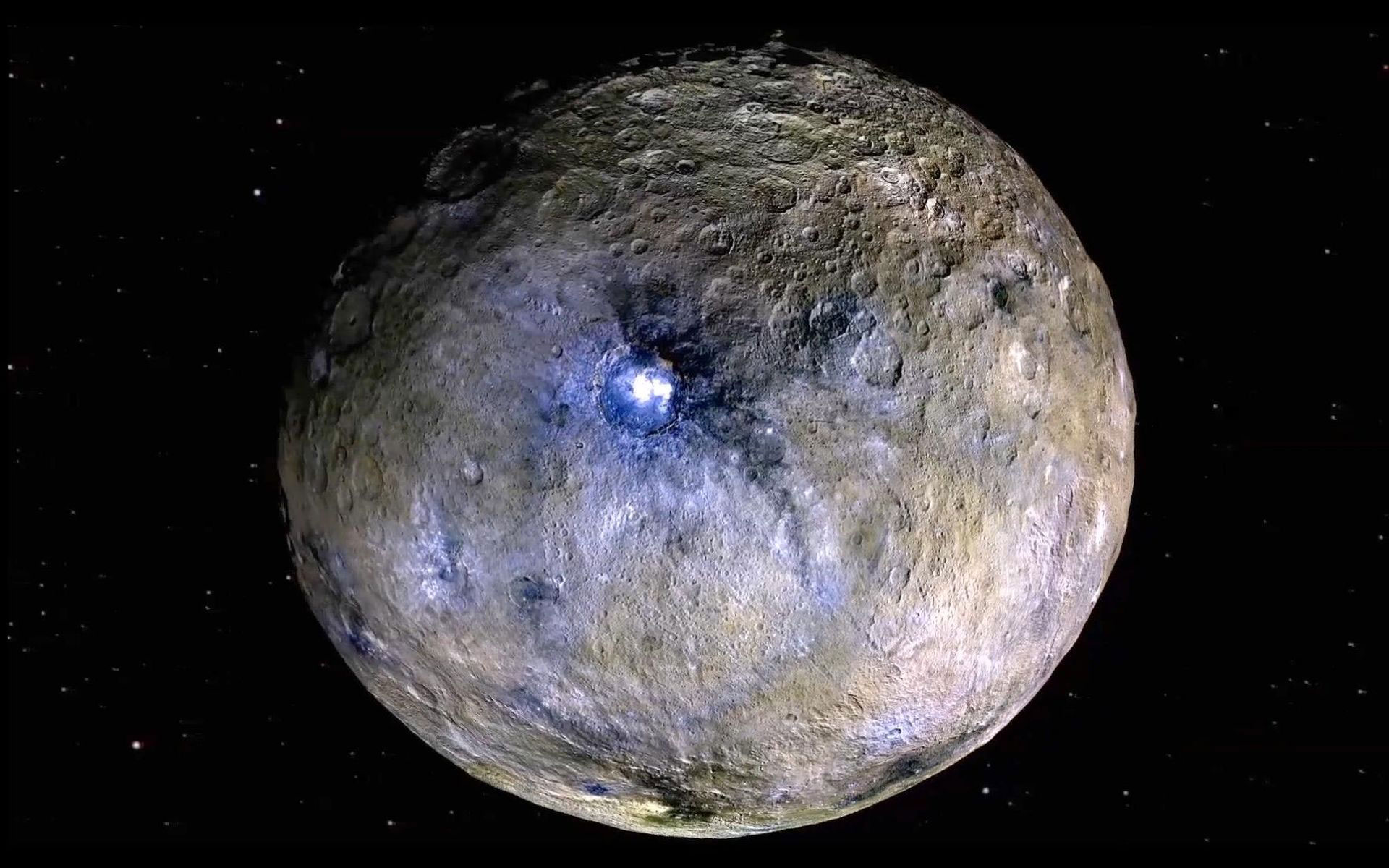
Dvergplaneten Ceres er vist i disse falske fargegjengivelsene, som fremhever forskjeller i overflatematerialer. Bilder fra NASAs Dawn-romfartøy ble brukt til å lage en film av Ceres som roterer, etterfulgt av en flyover-visning av Occator Crater, hjemmet til Ceres’ lyseste område. Kreditt: NASA/JPL
Modellering avslører hvordan Ceres driver uventet geologisk aktivitet.
I følge Scott King, en geoforsker ved Virginia Tech College of Science, vårt syn på Ceres har vært tåkete i svært lang tid. I tidligere teleskopskanninger fra Jorden, Ceres, en dvergplanet og den største kroppen i asteroidebeltet, som er området mellom[{” attribute=””>Jupiter and
In prior observations, scientists had seen the overall size of Ceres. It was thought to be inactive since it was so tiny. Instead, Dawn observed a massive plateau on one side of Ceres that encompassed a portion of the dwarf planet, comparable to what a continent might take up on Earth. Surrounding it were fractures in rocks clustered in one location. Additionally, there were obvious signs of an ocean world, including deposits all over the surface where minerals had condensed when water evaporated. These deposits were the sign of a freezing ocean.
King, a professor at the Department of Geosciences who focuses mostly on studying larger bodies like planets, was curious as to how a body as small as Ceres could produce the heat required to support that level of geological activity and explain for the surface features observed by Dawn.

This illustration models the topography (in meters) of Ceres from NASA’s Dawn project, with green and blue colors. Some of the dwarf planet’s major craters are labeled. A ruler is below the image of Ceres showing, in meters, negative 8,000 to positive 8,000. Credit: Virginia Tech
Through modeling, he and a team of scientists from multiple universities as well as the United States Geological Survey and the Planetary Science Institute found that the decay of radioactive elements within Ceres’s interior could keep it active. Their findings were recently published in American Geophysical Union Advances.
King’s study of big planets such as Earth,
That instability could explain some of the surface features that had formed on Ceres, as revealed by the Dawn mission. The large plateau had formed on only one side of Ceres with nothing on the other side, and the fractures were clustered in a single location around it. The concentration of features in one hemisphere signaled to King that instability had occurred and had left a visible impact.
“It turned out that you could show in the model that where one hemisphere had this instability that was rising up, it would cause extension at the surface, and it was consistent with these patterns of fractures,” King said.
Based on the team’s model, Ceres didn’t follow a planet’s typical pattern of hot first and cool second, with its own pattern of cool, hot, and cool again. “What we’ve shown in this paper is that radiogenic heating all on its own is enough to create interesting geology,” King said.
He sees similarities to Ceres in the moons of
“Some of these moons are not too different in size from Ceres,” King said. “I think applying the model would be really exciting.”
Reference: “Ceres’ Broad-Scale Surface Geomorphology Largely Due To Asymmetric Internal Convection” by Scott D. King, Michael T. Bland, Simone Marchi, Carol A. Raymond, Christopher T. Russell, Jennifer E. C. Scully and Hanna G. Sizemore, 17 May 2022, AGU Advances.
DOI: 10.1029/2021AV000571